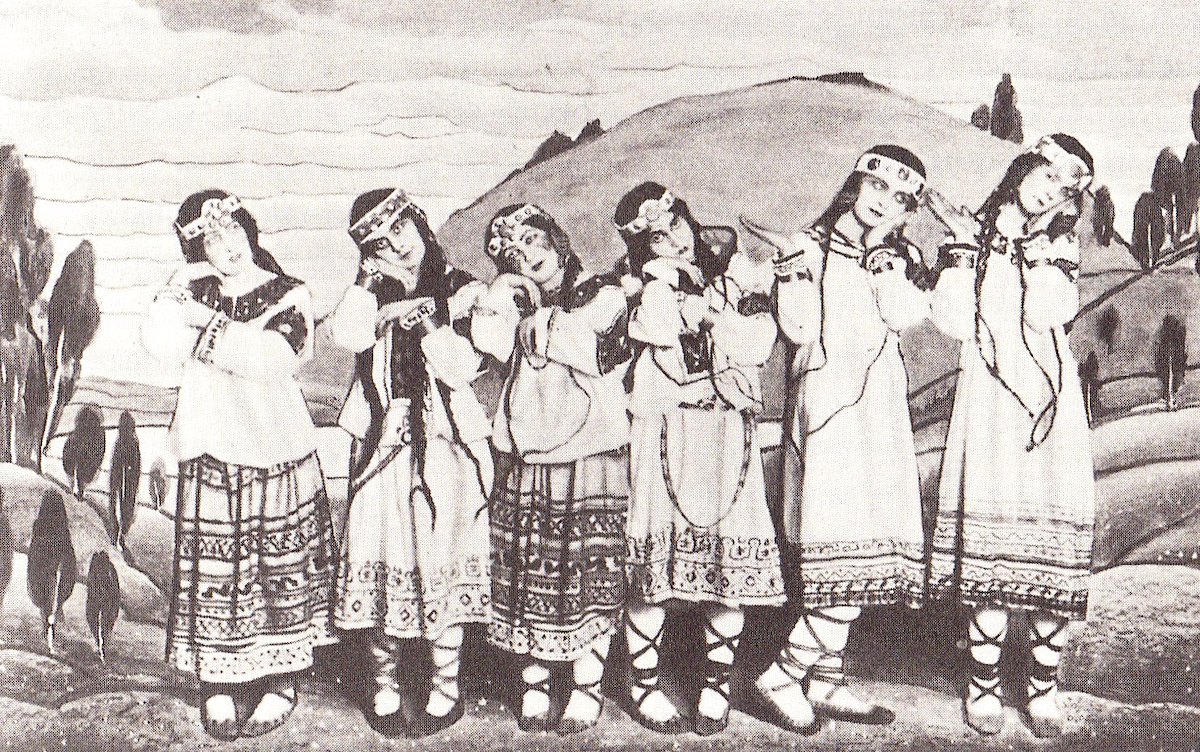October 24, 2023
Halloween Costume Inspiration from our Students
At SAB, we go all out when it comes to Halloween. Watch this video for some costume inspiration for you and your ballet BFFs!
Like a scary movie, sometimes it’s fun to watch a ballet that’s a little creepy or unsettling – especially this time of year! With Halloween just around the corner, we asked our faculty, pianists and staff to share which ballets give them the chills. Here’s the rundown of their picks in order of our staff votes – with number one being the most agreed upon top choice. Some of these ballets are well-known classics while others are newer works that you may be discovering for the first time. Either way, we hope you explore each one of these spooky ballets as they are sure to put you in the Halloween spirit!

Set to Igor Stravinsky’s hauntingly gorgeous score, Firebird is filled with fantastical creatures and has an eerie quality that is true of most traditional fairytales. Our favorite is George Balanchine’s version, which includes incredible sets and costumes originally designed by Marc Chagall. The monster costumes are particularly striking and true to the style of Chagall’s most famous paintings, the entire production looks like something out of a vivid, surreal dream.

The Rite of Spring is another ballet and orchestral concert work by Igor Stravinsky, and while there have been many interpretations of the ballet, the original version choreographed by Vaslav Nijinsky with stage designs and costumes by Nicholas Roerich is perhaps the most infamous and creepy. It premiered during the 1913 Paris season of Sergei Diaghilev’s Ballets Russes and both the avant-garde style of the music and choreography upset patrons so much they reportedly began to riot. The story of the ballet on its own is enough to give you the heebie-jeebies. Set in a pagan country town, one young woman is chosen to be sacrificed and dances herself to death through an intense series of jumps. While Nijinsky’s choreography was thought to be lost, the Joffrey Ballet managed to restage it based on research conducted over 16 years by dance experts Millicent Hodson and Kenneth Archer, who traveled the globe hunting down first-hand testimony and documentation of the original performance.

Perhaps La Sylphide is not as unnerving as some of the previously listed ballets, but it makes our spooky list for two main reasons – it’s a beautifully romantic tragic tale and it features a classic wicked witch. In fact, the second act of the ballet begins with the witch, accompanied by her fellow witches, casting a spell around a cauldron! The ballet was originally choreographed in 1832 by Filippo Taglioni, but only August Bournonville’s 1836 version survived and remains the basis of all modern-day stagings of the work.

Giselle is another spooky favorite. This beloved, two-act ballet is another romantic tragedy and essentially a ghost story. After she dies of a broken heart, Giselle becomes a Wili. Wilis are the spirits of maidens who died after being betrayed by their lovers and they take revenge in the night by dancing men to death by exhaustion. First premiering in 1841, Giselle is one of the most commonly performed ballets in history. Originally choreographed by Jean Coralli and Jules Perrot, the versions that have been passed down to the present day derive primarily from the revivals staged by Marius Petipa.


Certainly a favorite among the SAB staff is Balanchine’s La Sonnambula. Balanchine choreographed this work (then called Night Shadow) in 1946, for Ballet Russe de Monte Carlo and it tells the story of a Coquette, a Poet, and a beautiful Sleepwalker. The image of the Sleepwalker – gliding across the stage on pointe while holding a single candle – perfectly encapsulates the moody atmosphere of this spooky, but lovely ballet.

And what’s Halloween without a few creepy crawlies? Jerome Robbins’ The Cage takes us into a colony of female insects whose male counterparts are also their prey! This thrilling work, set to Stravinsky’s Concerto in D for String Orchestra, is one that stays with you long after you’ve seen it. With plenty of shocking and grotesque movements emphasized through angular lines, The Cage is sure to give you the creeps.
A few of our musicians on staff also shared a few of their favorite, spooky pieces of classical music. Add these to your Halloween playlist to bring some symphonic spookiness to your holiday!
Camille Saint-Saëns’ Danse Macabre
Aram Khachaturian’s Masquerade Waltz
Berlioz’s Symphony Fantastique
George Crumb’s Vox Balaenae
Janacek’s “Into the Mist: No 1 Andante”
October 24, 2023
At SAB, we go all out when it comes to Halloween. Watch this video for some costume inspiration for you and your ballet BFFs!
February 21, 2023
Here’s a quick look at a few of our advanced students’ classes on this past Valentine’s Day…
October 28, 2022
In anticipation of next week’s Halloween Open House, we’re flashing back to last year’s festivities. We cannot wait to see what amazing costumes our students